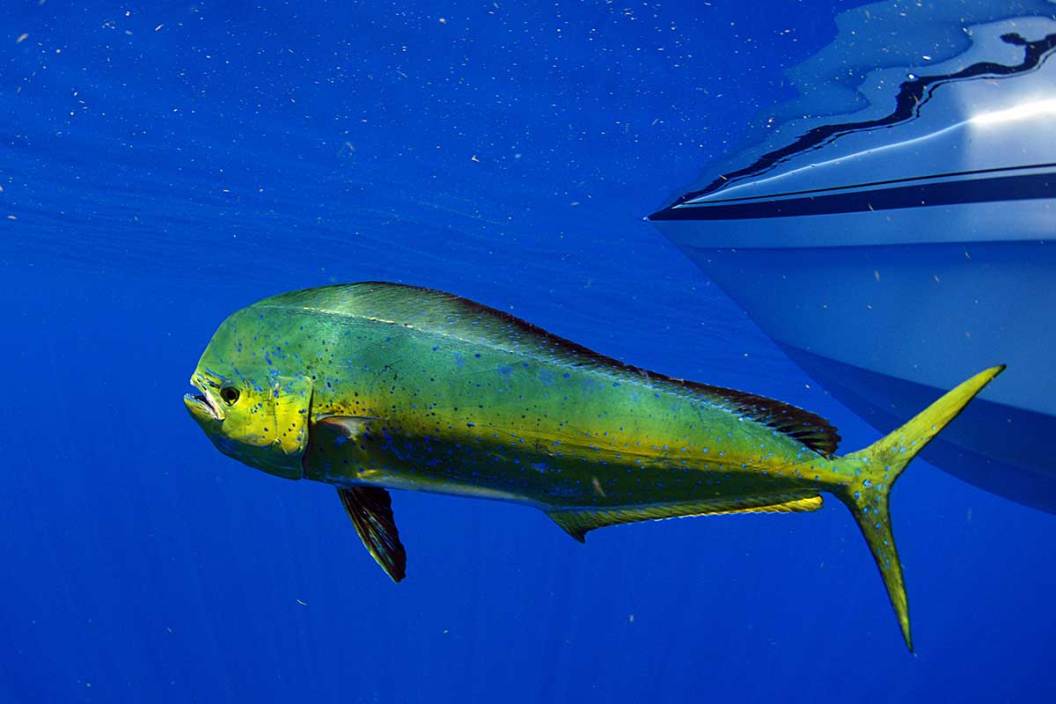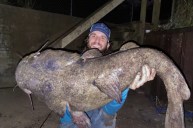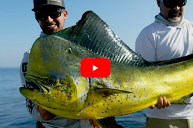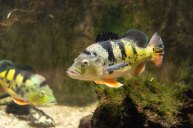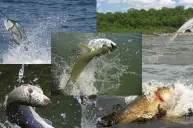Fishing for mahi mahi means going after one of the best eating fish there is.
The mahi mahi, or dolphinfish, is one of the fastest, most aggressive predator fish out there, and certainly represents some incredibly good eating. Maybe the most common name for this amazing game fish is the Spanish moniker "dorado," often given to it by the saltwater anglers that target this amazing fish species.
The term mahi mahi comes from the native Hawaiian language and means "very strong." Ask most ocean anglers, and they'll agree it's fitting. The strength of the dolphinfish is just one of the many good reasons to fish for it.. The streamlined mahi mahi is built for chasing prey with speed and dexterity and have been known to travel at over 50 mph.
Mahi mahi are an open ocean and highly migratory schooling fish found around the world in tropical and subtropical waters. They'll sometimes spawn two or three times during the spawning season.
Here are some of the defining characteristics of the mahi mahi, plus some common tactics used to fish for them.
The Mahi Mahi
The mahi mahi has a sail-like dorsal fin that extends nearly its entire length. Its body is colored an iridescent bluish-green and yellow. It is technically a ray-finned fish and averages three feet in length, although they may get as big as six feet and grow to 25 pounds or more.
The mahi mahi is one of the fastest growing fish and can reproduce at an amazing four or five months old.
These fish form schools and tend to congregate in and around seaweed and under floating objects, including buoys and even boats. Mahi mahi may live up to five years, but for many reasons usually only make it to three or four (although older specimens have been found).
Mahi mahi are a predatory fish species that hunts small fish like pilchard, mackerel, and even flying fish just to name a few, but they are also targeted themselves by other predators like billfish and sharks.
The species has a high commercial value and is extensively harvested. Some countries impose bag and size limits in the effort to increase sustainable fishing, but sportfishing opportunities abound for anglers that like a great challenge.
There are actually two species of dolphin fish: the common dolphin fish, whose scientific name is Coryphaena hippurus, and the pompano dolphin fish. The pompano is generally the smaller of the two. While the female pompano dolphin fish's head is rounded and smooth, it is also a vibrant, brightly-colored fish that is golden on the sides and brightly colored blue and green backs.
Mahi mahi are especially well known in the Caribbean, around Florida, all the way to the Gulf of Mexico, where much of the U.S.-based fishing takes place. The dorado is also found in large numbers off the coast of Hawaii, where the opportunities are also quite good.
The IGFA world record for mahi mahi is an 87-pound fish caught in Costa Rica in 1976.
Fishing for Mahi Mahi
Mahi mahi are some of the most aggressive and exciting gamefish to target, especially since they often travel in schools. Many veteran dorado anglers try to target sargassum or drifting orange-brown weed lines that the mahi mahi linger near.
The dolphin fish can be found near floating debris, manmade or otherwise. Mahi mahi also like warmer water and are drawn to temperature breaks and the currents that surround them.
As with many game fish species, the mahi mahi can be found simply by looking for a good deal of seabird activity on the horizon, since birds are a good indication that there are baitfish in the area.
Trolling is probably the most popular way to fish for mahi mahi, but you have to find them first. Trolling around weed lines works quite well, too. For trolling current breaks, veteran dorado anglers like to keep a constant speed, but vary from about 3-5 knots to find the right combination.
These same areas can be fished with live bait or chunk bait, particularly ballyhoo. When fishing around floating structure, using lighter saltwater setups in the 7' 6" or longer range of spinning rods and spinning reels rigged with 20- to 30-pound braid and a 30-pound fluorocarbon leader makes all the difference. Blue or sometimes pink jigs tipped with ballyhoo or squid can entice ferocious strikes.
The Mahi Mahi as an Iconic Species
Mahi mahi are known to be a surface dwelling fish, meaning they typically swim and hunt their prey closer to the surface of the water than not. Since they mostly cruise in this zone, there are many things to be on the lookout for when targeting the pelagic dolphinfish.
Here's an incredible video of the dorado on the hunt for flying fish.
Mahi mahi are always on the lookout for baitfish, but are ultimately not very predictable. Sometimes a chum line can be set up to keep them happy and in the area that you are fishing, and therefore more interested in your offering.
When hooked, the dorado can be one of the most acrobatic fish ever to stretch your line, so it's best to have good quality terminal tackle to keep larger fish from getting the best of your tackle. Probably the best bet is to research the local guide scene and make a few phone calls.
This is the easiest work you will ever do to catch some great eating fish and have the fishing trip of a lifetime.
Looking for a little more or even hot lunch for your hunting blind? Follow my webpage, or on Facebook and YouTube.
NEXT: BEST SALTWATER FISHING GEAR FOR BEGINNERS
WATCH
